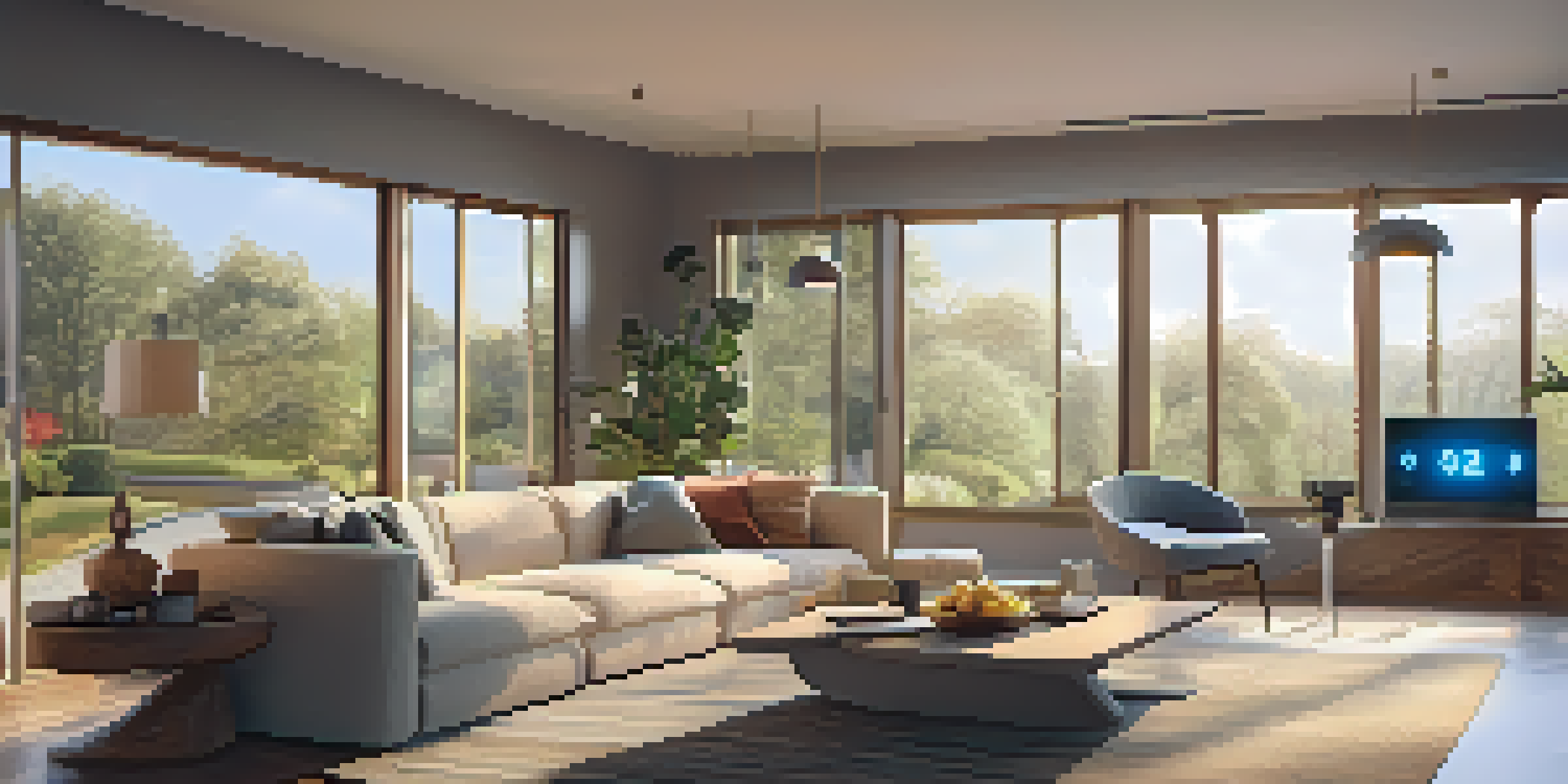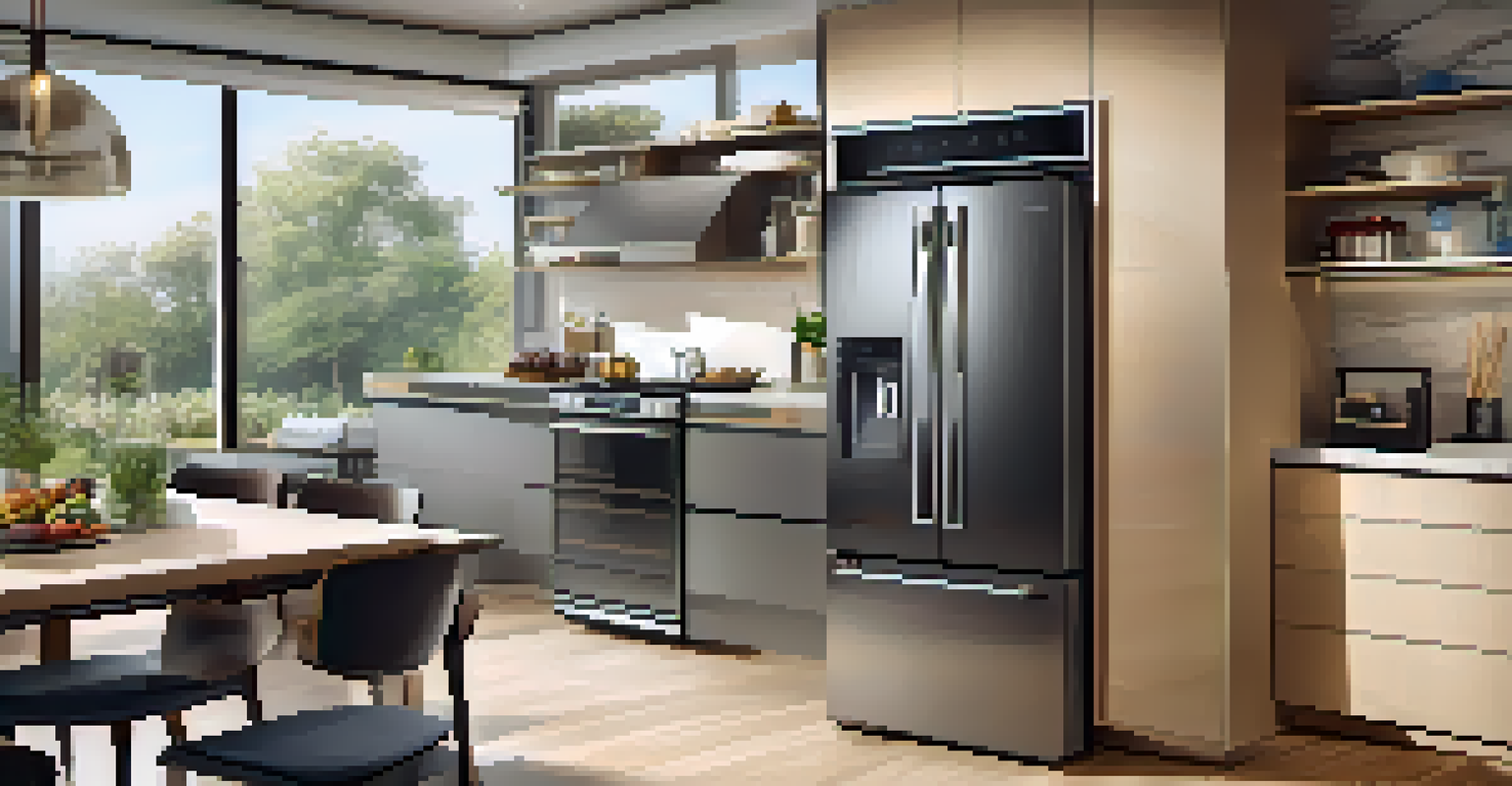Home Automation for Homeowners: A Comprehensive Guide

Understanding Home Automation: What It Is and Why It Matters
Home automation refers to the use of technology to control household systems remotely. This can include lighting, heating, security, and even appliances, all managed from a smartphone or tablet. For homeowners, this means increased convenience and efficiency, making everyday tasks simpler and more manageable.
Home automation is not just about convenience; it's about creating a home that fits your lifestyle and enhances your quality of life.
Imagine arriving home on a chilly evening and having your house warm up just before you walk in. This is just one of the many comforts home automation can bring. With just a tap on your phone, you can adjust your thermostat, switch on lights, or even start your coffee maker!
Moreover, home automation can enhance security. Smart locks and cameras allow you to monitor your property from anywhere, giving you peace of mind whether you're at work or on vacation. It's all about making your home work for you, streamlining tasks, and improving your quality of life.
Key Components of a Home Automation System
A typical home automation system consists of various components that work together seamlessly. These can include smart thermostats, security cameras, smart lighting, and voice-activated assistants like Amazon Alexa or Google Assistant. Each component plays a vital role in creating an interconnected home environment.

For instance, smart lighting systems can be programmed to illuminate your home at specific times or can be controlled via your smartphone. This means no more fumbling for light switches in the dark! Similarly, smart thermostats learn your preferences, adjusting temperatures to suit your daily routine, which can also save you money on energy bills.
Home Automation Enhances Convenience
Home automation allows homeowners to control various household systems remotely, increasing convenience and efficiency in daily tasks.
It's essential to choose components that are compatible with each other and fit your lifestyle. A good home automation system should be flexible and scalable, allowing you to add or replace devices as your needs evolve over time.
Benefits of Home Automation for Homeowners
The benefits of home automation extend beyond mere convenience; they also include improved energy efficiency. Smart devices can optimize energy use, helping you reduce waste and lower utility bills. For example, automated blinds can adjust to block sunlight during peak hours, keeping your home cooler without relying excessively on air conditioning.
The greatest benefit of home automation is that it allows you to control your environment with ease, making everyday tasks simpler and more manageable.
Additionally, home automation can enhance security. With smart locks and camera systems, you can monitor your home in real-time, receiving alerts about unusual activity. This added layer of security can be particularly reassuring for homeowners who travel frequently or spend extended periods away from home.
Finally, there's the sheer joy of control. Imagine being able to set the mood for a gathering with just a few taps on your phone, adjusting lighting and music to create the perfect atmosphere. These little conveniences can significantly improve your everyday living experience.
Getting Started with Home Automation: A Step-by-Step Approach
Starting your home automation journey can seem daunting, but breaking it down into manageable steps makes it easier. First, assess your needs: what tasks would you like to simplify? Whether it's improving security, optimizing energy use, or enhancing comfort, knowing your goals will guide your choices.
Next, research compatible devices and systems. Each smart device may have different features, so look for products that align with your goals and ensure they work well together. Many manufacturers offer starter kits that include essential devices, making it easier to get started.
Improved Security with Smart Devices
Smart locks and cameras provide real-time monitoring and alerts, significantly enhancing the security of your home.
Finally, installation can vary from simple plug-and-play devices to more complex setups requiring professional help. Don’t hesitate to seek guidance from experts if needed. Once installed, take the time to familiarize yourself with the system to reap its full benefits!
Common Challenges and How to Overcome Them
Like any technology, home automation can come with its challenges. One common issue is compatibility; not all devices work seamlessly together, which can lead to frustration. To avoid this, stick to devices that are known to integrate well with each other and consider opting for products that support common standards like Z-Wave or Zigbee.
Another challenge is connectivity. Many smart devices rely on Wi-Fi, so if your network isn’t reliable, your home automation experience may suffer. Improving your Wi-Fi coverage with extenders or a mesh network can help ensure all your devices remain connected and responsive.
Finally, user experience can vary from device to device. It’s helpful to read reviews and perhaps even test devices before committing. Many retailers offer return policies that allow you to try out products risk-free, ensuring you find what works best for your home.
Future Trends in Home Automation to Watch
As technology advances, the future of home automation looks promising. One trend gaining traction is the integration of artificial intelligence (AI) into smart devices. AI can learn your habits over time, making your home even more intuitive and responsive to your needs.
Another exciting development is the rise of voice control, allowing homeowners to manage devices hands-free. Imagine adjusting your home’s temperature or lighting just by speaking a command! This technology is becoming more sophisticated, making it an integral part of home automation.
Future Trends in Smart Technology
The integration of AI and voice control is making home automation more intuitive, while a focus on sustainability is influencing the development of eco-friendly devices.
Finally, sustainability is becoming a key focus. More homeowners are looking for eco-friendly options, and manufacturers are responding by developing smart devices that help reduce energy consumption. This trend not only benefits the environment but also helps homeowners save money in the long run.
Choosing the Right Home Automation System for You
When selecting a home automation system, it's crucial to consider your specific needs and lifestyle. Start by identifying which areas of your home you’d like to automate, such as security, energy management, or entertainment. This focus will help you choose the right system and devices to meet those needs.
Next, consider your budget. Home automation can range from affordable DIY setups to more comprehensive systems that require professional installation. Look for solutions that offer scalability, allowing you to start small and expand your system over time without breaking the bank.

Lastly, don't underestimate the importance of user experience. Choose a system with an intuitive interface and ample support resources, such as tutorials or customer service. The easier the system is to use, the more you'll enjoy the benefits of home automation.